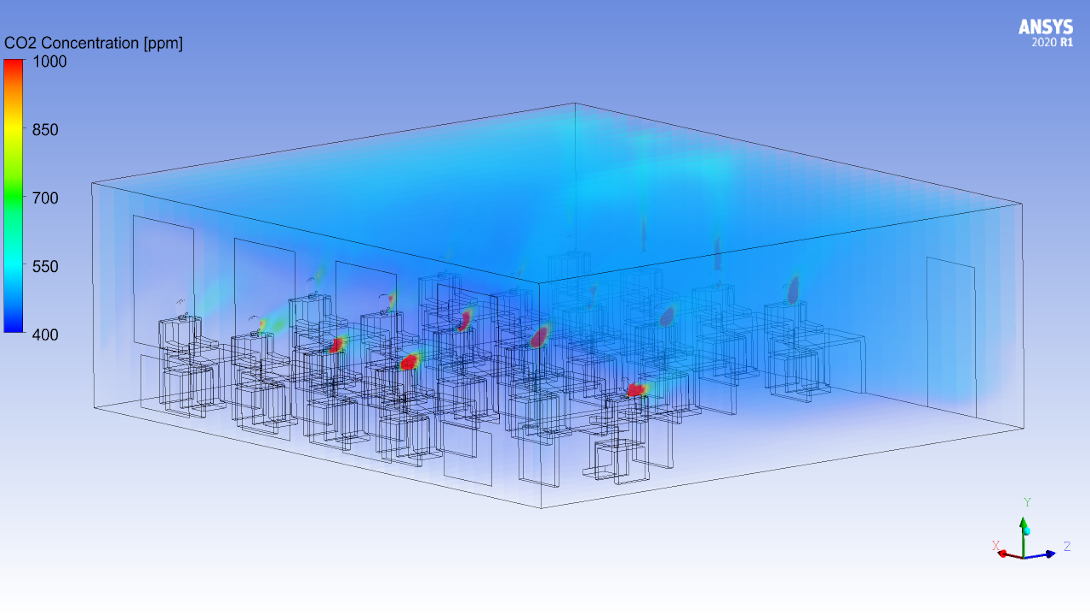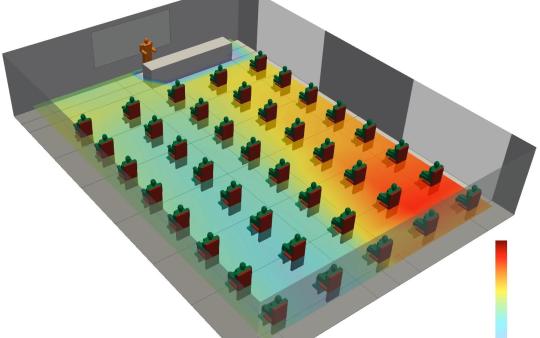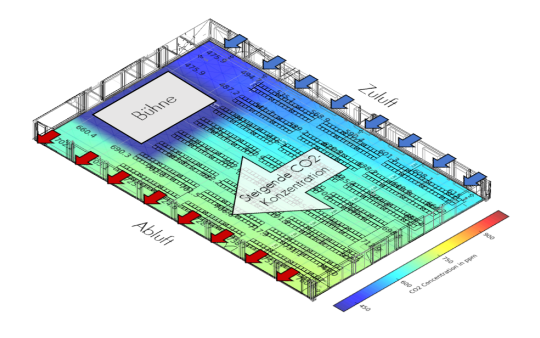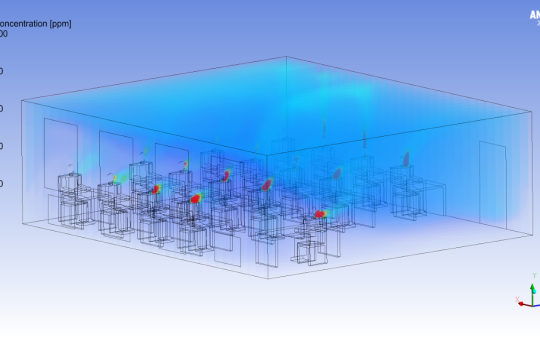Covid19 - Minimizing the risk of infection in classrooms
The return to normal school operations is gaining momentum. Many learned personal measures help to minimize the risk of infection. An important factor for safe face-to-face teaching is the air quality, which must be checked. Studies show that there is a connection between the CO2 content of the air and the risk of infection, as aerosols are emitted in the air we breathe. The higher the CO2 content in common rooms, the higher the risk of infection.
In summer the solution is simple: permanent ventilation of the classrooms and seminar rooms.
But what to do when autumn and winter come? XRG tried this out using dynamic simulation models. The aim is to achieve the best possible air quality in an unair-conditioned classroom without losing sight of thermal comfort. A classic optimization problem with competing requirements where there is no 100% optimal solution. As a result, a combination of shock ventilation during breaks and windows in the tilt position during lessons provides usable values.
You can find a detailed presentation of the results here: Optimum ventilation in classrooms.






